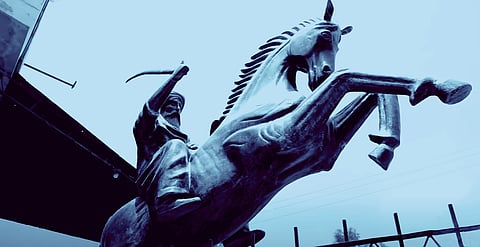From Bin Qasim to Ertugrul
It is not unusual for the residents of Lahore's Marghzar Colony to find themselves surrounded by religious symbolism. One of the many intersections in the colony, Dua Chowk, features an enormous sculpture of two hands raised in prayer. There are Ameer Hamza Road and Hazrat Ali Road (Prophet Mohammad's uncle and cousin respectively, both prominent figures in the Islamic world.) There are parks named after Prophet Mohammad's first wife, Khadijah, and his companion, Hassan ibn Thabit.
There is a new addition to these symbols though: a fibreglass statue of a man riding a horse with a sword in hand, erected at one of the busiest intersections of the colony. Whether you are passing by in your car, peeking out of the windows of the neighbouring school, or having a cup of tea at the dhaba nearby, you will see the statue. There is no inscription on it to satiate the curiosity of an unknowing passerby. However, the new name of the intersection will answer all questions: Ertugrul Ghazi Chowk.

